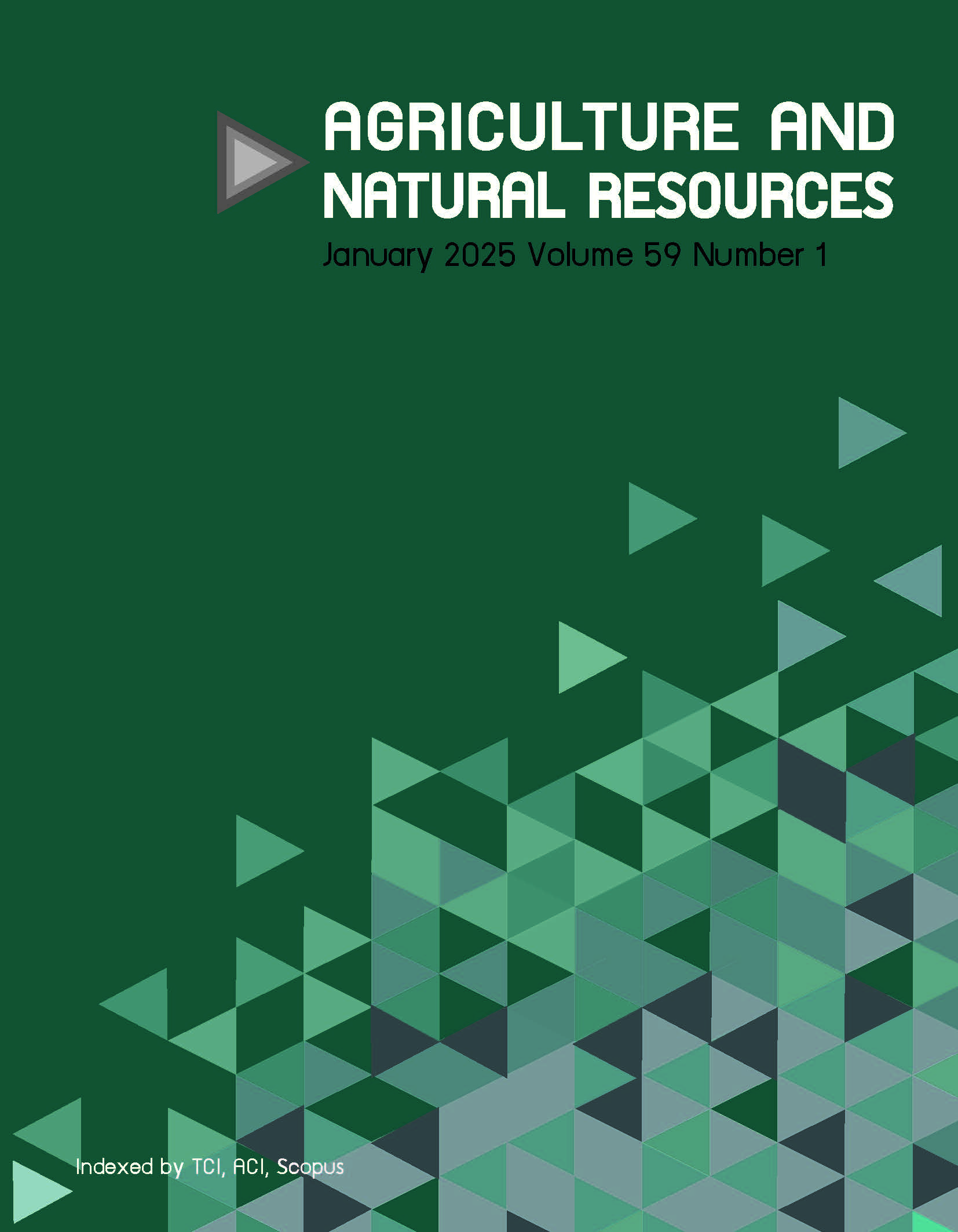Fungicide resistance in Colletotrichum species causing durian anthracnose in eastern Thailand
คำสำคัญ:
Anthracnose disease, Colletotrichum, Durian, Fungicides, Fungicide sensitivityบทคัดย่อ
Importance of the work: Durian (Durio zibenthinus Murr.) is one of the most popular and exceptionally high-value fruit crops globally. Colletotrichum species are the causal pathogens of durian anthracnose, making managing fungicide resistance in the field mandatory.
Objectives: To evaluate the sensitivity of Colletotrichum species on various fungicides currently used in durian orchards in eastern Thailand.
Materials and Methods: In total, 15 Colletotrichum isolates were tested for sensitivity to several fungicide classes: Quinone outside Inhibitors (QoIs), DeMethylation Inhibitors (DMIs) and multi-site fungicides were tested on culture medium at concentrations of 0.1, 1, 10, 100 and 1,000 µg/mL. The 50% mycelial growth inhibition (EC50) was analyzed and used to classify sensitive or resistant phenotypes. The selected isolates were evaluated for their fungicide sensitivity to spore germination and on detached durian leaves.
Results: In all 15 tested Colletotrichum isolates, the mycelial growth was sensitive to difenoconazole and prochloraz (EC50 range of 0.02–45.5 µg/mL). Additionally, the EC50 values varied significantly for pyraclostrobin (0.09 to over 100 µg/mL). Of these isolates, six showed sensitivity to pyraclostrobin. Unfortunately, 11 and 6 isolates exhibited resistance to chlorothalonil and mancozeb, respectively. Furthermore, both pyraclostrobin and mancozeb exhibited similar sensitivity phenotypes in mycelial growth and spore germination inhibition across all tested isolates. Notably, difenoconazole had higher EC50 values (74.42–316.75 µg/mL) to spore germination inhibition. Pyraclostrobin, difenoconazole and mancozeb effectively controlled disease severity in sensitive isolates on detached durian leaves. In contrast, these fungicides had no effect on the fungicide-resistant isolates.
Main finding: A population of Colletotrichum resistant to pyraclostrobin, chlorothalonil and mancozeb was identified in durian orchards. Fortunately, the pathogen remains susceptible to two other fungicides (difenoconazole and prochloraz). Thus, these latter two fungicides should be recommended for use or rotation with other mode-of-action fungicides in the anthracnose disease management program for durians in eastern Thailand.
ดาวน์โหลด
เผยแพร่แล้ว
รูปแบบการอ้างอิง
ฉบับ
ประเภทบทความ
สัญญาอนุญาต
ลิขสิทธิ์ (c) 2025 online 2452-316X print 2468-1458/Copyright © 2025. This is an open access article under the CC BY-NC-ND license (http://creativecommons.org/licenses/by-nc-nd/4.0/), production and hosting by Kasetsart University Research and Development Institute on behalf of Kasetsart University.online 2452-316X print 2468-1458/Copyright © 2022. This is an open access article under the CC BY-NC-ND license (http://creativecommons.org/licenses/by-nc-nd/4.0/),
production and hosting by Kasetsart University of Research and Development Institute on behalf of Kasetsart University.







